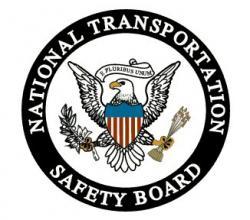Failure To "See and Avoid" Cited
 The NTSB has informed us that the probable cause of a midair
collision between two emergency medical service (EMS) helicopters
last year was that both pilots' failed to see and avoid the other
helicopter on approach to the helipad. Contributing to the accident
were the failure of one of the pilots to follow arrival and noise
abatement guidelines and the failure of the other pilot to follow
communications guidelines.
The NTSB has informed us that the probable cause of a midair
collision between two emergency medical service (EMS) helicopters
last year was that both pilots' failed to see and avoid the other
helicopter on approach to the helipad. Contributing to the accident
were the failure of one of the pilots to follow arrival and noise
abatement guidelines and the failure of the other pilot to follow
communications guidelines.
On June 29, 2008, about 3:47 pm MST, two Bell 407 EMS
helicopters, operated by Air Methods Corporation, and by Classic
Helicopter Services, collided in midair while approaching the
Flagstaff Medical Center (FMC) helipad in Flagstaff, Arizona. All 7
persons aboard the two helicopters were killed and both helicopters
were destroyed.
"This accident highlights the importance of adhering to the
regulations and guidelines that are in place," said Acting Chairman
Mark V. Rosenker. "Had these pilots been more attentive and aware
of their surroundings, and if communications would have been
enhanced, this accident could have been prevented."
In its report today, the Board noted that both EMS helicopters
were on approach to the Flagstaff Medical Center (FMC) helipad to
drop off patients. During the flights, both pilots had established
two-way communications with their communications centers and
provided position reports. The FMC communications center
coordinator advised the Air Methods pilot that there would be
another helicopter dropping off a patient at FMC. The FMC
coordinator also advised Classic communication center that Air
Methods would be landing at FMC, but the Classic communication
center did not inform the Classic pilot nor was it required to do
so.
However, the Board stated that if Classic's pilot had contacted
the FMC communications center, as required, the FMC transportation
coordinator likely would have told him directly that another
aircraft was expected at the helipad. If the pilot had known to
expect another aircraft in the area, he would have been more likely
to look for the other aircraft, the report stated.
 As documented in the report, Air Methods did not follow the
noise abatement guidelines, to approach the helipad from a more
easterly direction. Classic approached the helipad from the
northeast, and it is likely that the pilot would have been visually
scanning the typical flight path that other aircraft approaching
the medical center would have used. Thus, if the Air Methods
helicopter had approached from a more typical direction, the pilot
of the Classic helicopter may have been more likely to see and
avoid it.
As documented in the report, Air Methods did not follow the
noise abatement guidelines, to approach the helipad from a more
easterly direction. Classic approached the helipad from the
northeast, and it is likely that the pilot would have been visually
scanning the typical flight path that other aircraft approaching
the medical center would have used. Thus, if the Air Methods
helicopter had approached from a more typical direction, the pilot
of the Classic helicopter may have been more likely to see and
avoid it.
Neither helicopter was equipped with a traffic collision
avoidance system, nor was such a system required. Had such a system
been on board, the Board noted, it likely would have alerted the
pilots to the traffic conflict so they could take evasive action
before the collision. However, according to Federal regulations,
ultimately the pilots are responsible for maintaining vigilance and
to be on alert and avoid other aircraft at all times.
 Classic Aero-TV: In Praise of Alabamas Patriot Aircraft USA
Classic Aero-TV: In Praise of Alabamas Patriot Aircraft USA NTSB Final Report: Cirrus Design Corp SR22
NTSB Final Report: Cirrus Design Corp SR22 ANN's Daily Aero-Term (12.21.25): Dead Reckoning
ANN's Daily Aero-Term (12.21.25): Dead Reckoning ANN's Daily Aero-Linx (12.21.25)
ANN's Daily Aero-Linx (12.21.25) Aero-News: Quote of the Day (12.21.25)
Aero-News: Quote of the Day (12.21.25)




